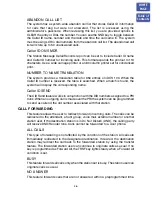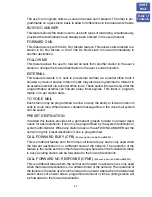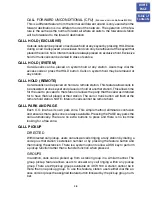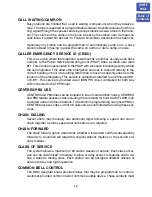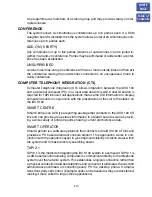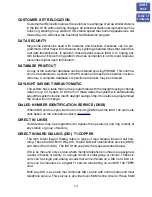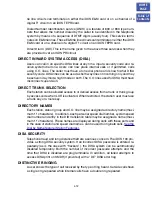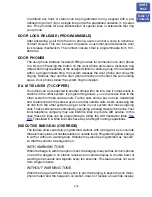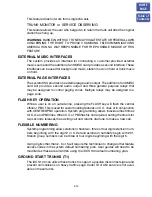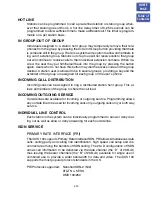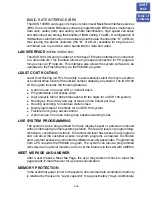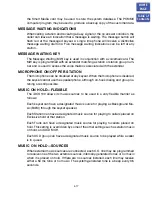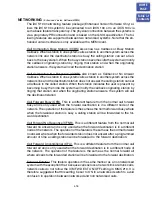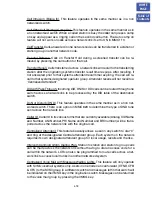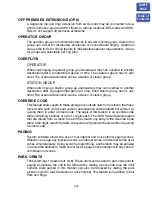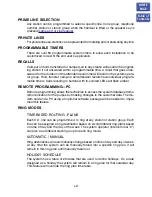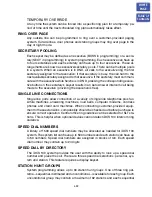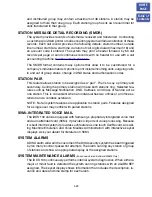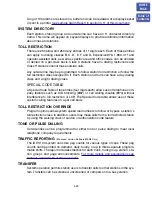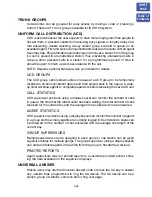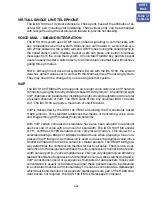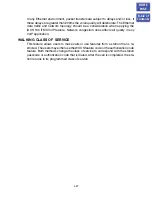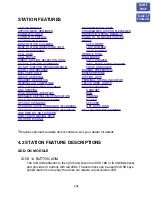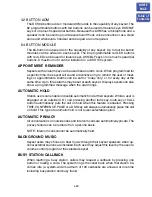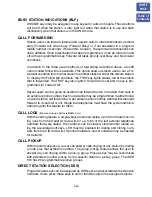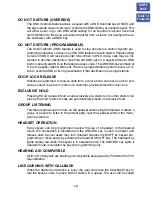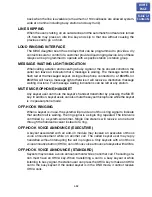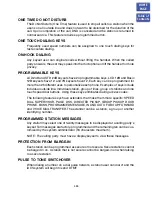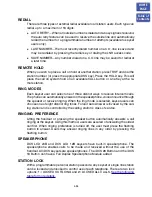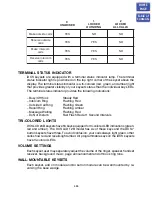
OFF PREMISES EXTENSIONS (OPX)
A single line (tip and ring) extension from an SLI card may be connected to tele-
phone company-provided OPX circuits to remote locations. 8SLI cards and KDb-
SLIs do not support off premises extensions.
OPERATOR GROUP
The operator group can contain 32 stations to answer incoming calls. Calls to this
group can be set for distributed, sequential or unconditional ringing. Operators
can use the In/Out of Group feature to meet flexible operator requirements. Opera-
tor groups are selectable per ring plan.
OVERFLOW
OPERATOR
When calls ringing a operator group go unanswered, they can overflow to another
destination after a programmed period of time. The operator group has its own
timer. The overflow destination can be a station or station group.
STATION GROUP
When calls ringing a station group go unanswered, they can overflow to another
destination after a programmed period of time. Each station group has its own
timer. The overflow destination can be a station or station group.
OVERRIDE CODE
This feature allows users to make emergency outside calls from a station that has a
forced code such as Account code or authorization code enabled but without re-
quiring them to enter a forced code. The basis of this feature is an override code
table containing 5 entries of up to 11 digits each. The iDCS 100 will examine digits
that are dialed from a station to see if they match any entry in the Override Code
table. If the digits match the table, the system will process the call without requiring
a forced code.
PAGING
System software allows the use of four internal and four external paging zones.
Stations can page any individual zone, all internal zones, all external zones or all
zones simultaneously. Using system programming, each station may be allowed
or denied the abilities to make and/or receive page announcements to any zone or
combination of zones.
PARK ORBITS
The system has 10 park orbits (0–9). These orbits can be used to park calls prior to
paging and allows the call to be retrieved by dialing a park code plus the orbit
number. Calls parked in this manner can also be retrieved by dialing the park
pickup code (10) plus the station or trunk number. This feature is in addition to Call
Park and Page.
4.20
HOME
PAGE
Table of
Contents

